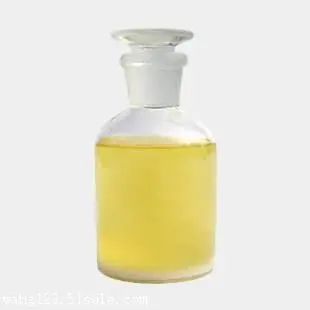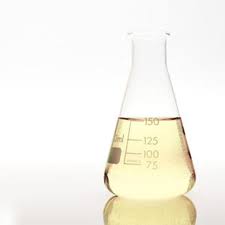**The Smoker’s Breath Stealer: How Lighting Up Sabotages Your Lungs’ Secret Weapon**
(How Does Smoking Affect Water/Surfactant Layer)
Imagine millions of tiny, fragile soap bubbles inside your lungs. Their job is absolutely vital. They keep your lungs springy and open. They let you breathe in and out without a struggle. This incredible system is called the water/surfactant layer. Smoking? It’s like throwing sand into that delicate bubble bath. Let’s uncover how cigarettes wage war on this hidden lifeline.
**1. What Exactly Is This Water/Surfactant Layer?**
Think of your lungs’ deepest parts. Think of millions of tiny air sacs called alveoli. This is where oxygen enters your blood. Carbon dioxide leaves. These sacs are incredibly delicate. They are lined with a thin film of water. Water molecules like to stick together. This creates surface tension. High surface tension inside these tiny sacs is a big problem. It makes the sacs want to collapse. Breathing would be exhausting. Your lungs would stick together.
This is where surfactant saves the day. Surfactant is a special mix. It’s made of fats and proteins. Your body produces it naturally. It spreads itself over the water lining inside the alveoli. Surfactant molecules have a special talent. One end loves water. The other end hates water. This breaks the water’s surface tension. It acts like a biological soap. It makes the air sacs slippery and bouncy. It prevents them from collapsing when you breathe out. It makes inflating your lungs on the next breath much easier. The water/surfactant layer is this critical combination. It’s the thin film keeping your air sacs open and functional. It’s essential for effortless breathing.
**2. Why Does Smoking Target the Water/Surfactant Layer?**
Cigarette smoke isn’t just hot air. It’s a nasty chemical cocktail. Thousands of harmful substances are in it. Many are oxidants. Others directly damage cells. The lungs are the smoke’s first point of contact. The delicate alveoli and their precious lining take the hit.
The cells that make surfactant are vulnerable. Smoke chemicals injure them. This reduces surfactant production. Smoke also contains tiny particles. These particles land on the water/surfactant layer. They act like pollutants in a pristine pond. They physically disrupt the smooth surfactant film. Oxidants in the smoke attack the surfactant molecules themselves. They break apart the fats and proteins. They degrade them. This makes the surfactant less effective. Think of pouring dirty oil into a perfectly balanced bubble solution. The bubbles pop easily. They lose their strength. That’s what smoke does inside your lungs. It directly assaults the system designed to keep breathing easy.
**3. How Does Smoking Damage the Water/Surfactant Layer?**
The damage happens step by step. It’s a relentless attack:
* **Production Shutdown:** Smoke toxins damage the Type II pneumocyte cells. These are the surfactant factories. Injured cells make less surfactant. Sometimes they stop making it altogether. Less surfactant means less protection.
* **Chemical Sabotage:** Oxidants like free radicals in smoke react with surfactant lipids. They break them down. They damage the proteins crucial for spreading surfactant evenly. This creates “bad” surfactant. It doesn’t lower surface tension well.
* **Physical Disruption:** Tar and soot particles land on the water/surfactant layer. They act like grit. They interfere with the smooth film. They create weak spots. This makes the layer uneven. Collapse happens more easily at these weak points.
* **The Sticky Result:** Damaged surfactant fails. Surface tension rises dramatically inside the alveoli. The tiny air sacs lose their bounciness. They become stiff. They collapse much more easily when you exhale. Opening them up for the next breath requires huge effort. Breathing feels like hard work. This is a key reason smokers get short of breath. The lungs are literally sticking together inside. This collapse also traps air. It blocks oxygen exchange. It’s inefficient and damaging.
**4. Applications: Real-World Impact of a Damaged Water/Surfactant Layer**
This isn’t just lab theory. Damaging the water/surfactant layer has serious, everyday consequences for smokers:
* **Shortness of Breath (Dyspnea):** This is often the first noticeable sign. Simple tasks like climbing stairs become difficult. Lungs stiffened by high surface tension demand more work. The smoker feels constantly winded.
* **Increased Risk of Lung Collapse (Atelectasis):** Without surfactant’s protective film, areas of the lung collapse easily. This is especially risky after surgery or during illness. Collapsed lung tissue doesn’t work. It reduces oxygen levels.
* **Chronic Obstructive Pulmonary Disease (COPD):** Emphysema and chronic bronchitis are major parts of COPD. Destroyed alveoli and inflamed airways are hallmarks. A dysfunctional surfactant system contributes significantly. It makes the lungs less elastic. It promotes airway collapse. It worsens the disease progression. Managing COPD is harder when this layer is broken.
* **Higher Vulnerability to Infections:** The water/surfactant layer isn’t just mechanical. It has immune functions too. Surfactant proteins help trap and kill bacteria and viruses. Damaged surfactant means weaker lung defense. Smokers get more respiratory infections. These infections are often more severe. Pneumonia is a major risk.
* **Impaired Oxygen Exchange:** Ultimately, collapsed or stiff alveoli can’t do their job. Oxygen struggles to get into the blood. Carbon dioxide struggles to get out. This leads to lower blood oxygen levels. It strains the heart. It contributes to fatigue and poor overall health.
**5. FAQs About Smoking and the Water/Surfactant Layer**
* **Does quitting smoking help the surfactant layer recover?** Yes. Quitting is the single best action. Damaged Type II cells can start to repair. Surfactant production can improve. The constant chemical assault stops. This allows the layer to slowly regain some function. Lung elasticity often improves. Breathing gets easier. The sooner you quit, the better the chance for recovery.
* **Do e-cigarettes or vaping harm the surfactant layer too?** The science is still developing. E-cigarette aerosol contains different chemicals. Many are still harmful. Studies show vaping can cause lung inflammation. It can damage lung cells. This likely impacts surfactant production and function. Vaping is not a safe alternative for lung health. It poses its own risks to this critical system.
* **Can doctors give surfactant to smokers like they do for premature babies?** Not routinely. Premature babies lack surfactant because their lungs are underdeveloped. Giving them artificial surfactant is life-saving. In smokers, the problem is damage to existing cells and molecules. Giving extra surfactant doesn’t fix the underlying injury. The smoke would likely damage the new surfactant too. The focus must be on stopping smoking and managing symptoms.
* **Is the damage only in heavy smokers?** No. Even light or social smoking causes harm. The toxic chemicals in smoke begin disrupting the water/surfactant layer immediately. The damage accumulates over time. There is no safe level of smoking for your lungs.
(How Does Smoking Affect Water/Surfactant Layer)
* **Does secondhand smoke affect this layer?** Absolutely. Breathing secondhand smoke exposes your lungs to many of the same toxins. It causes inflammation. It can damage lung cells. This includes the cells vital for surfactant production and function. Protecting yourself and others from secondhand smoke is crucial for lung health.
Inquiry us
if you want to want to know more, please feel free to contact us.




